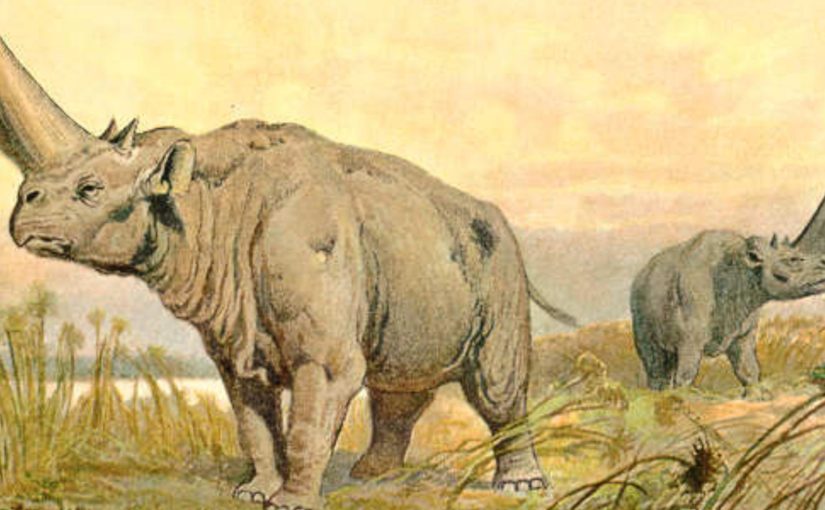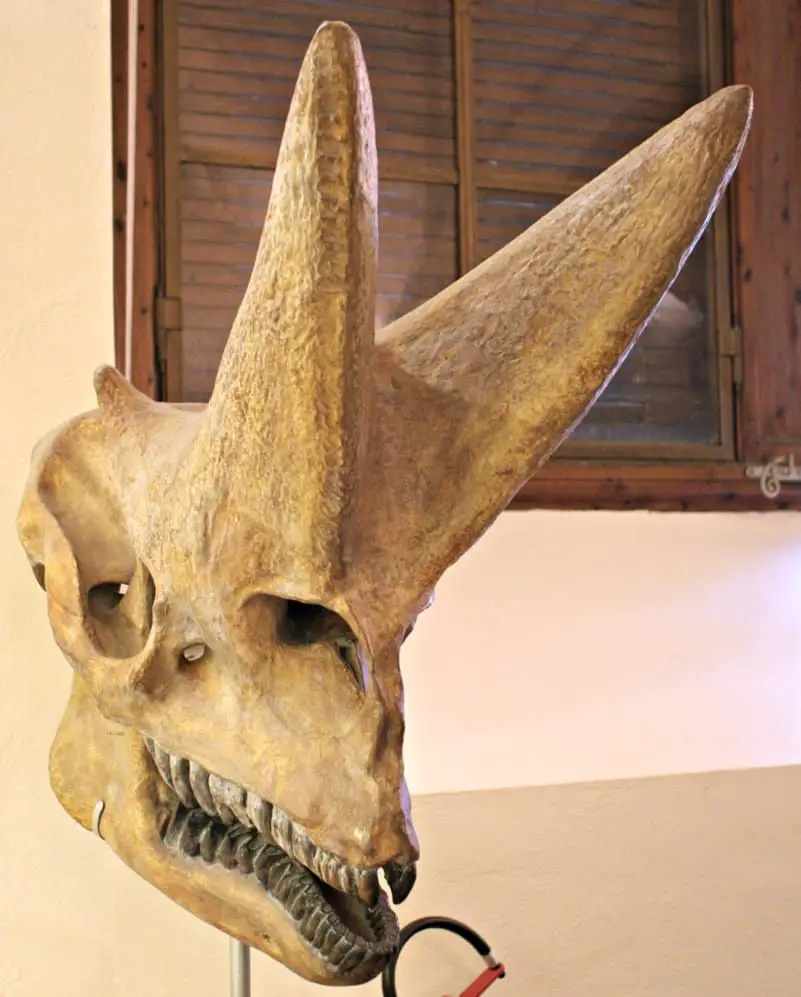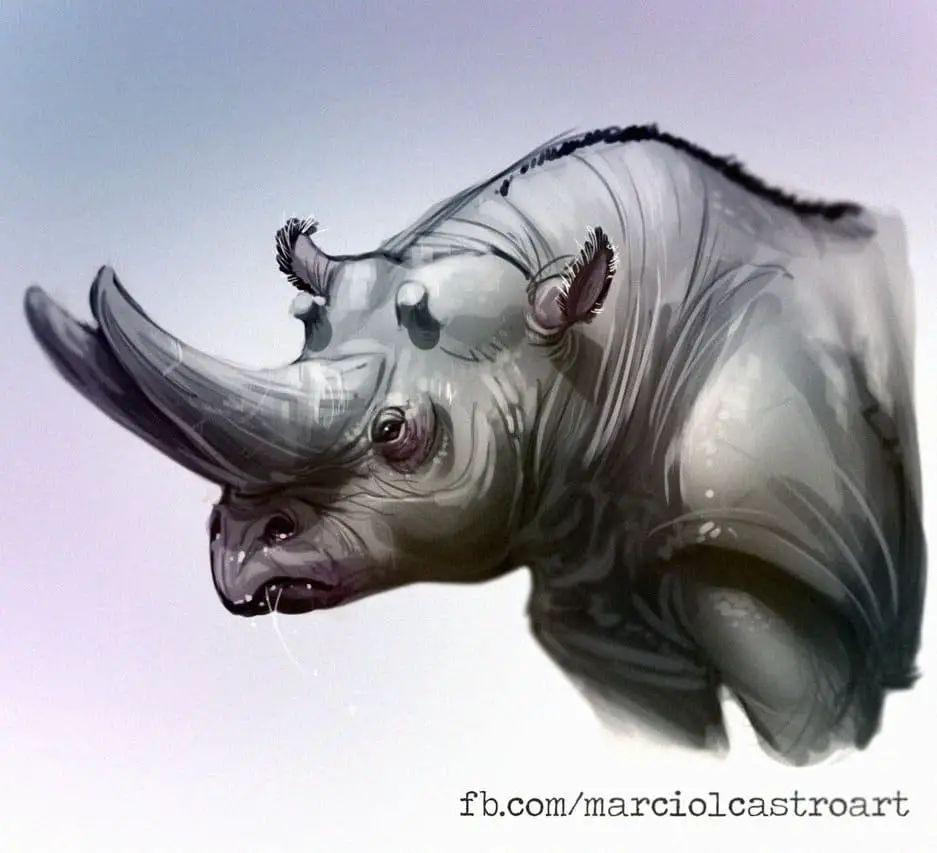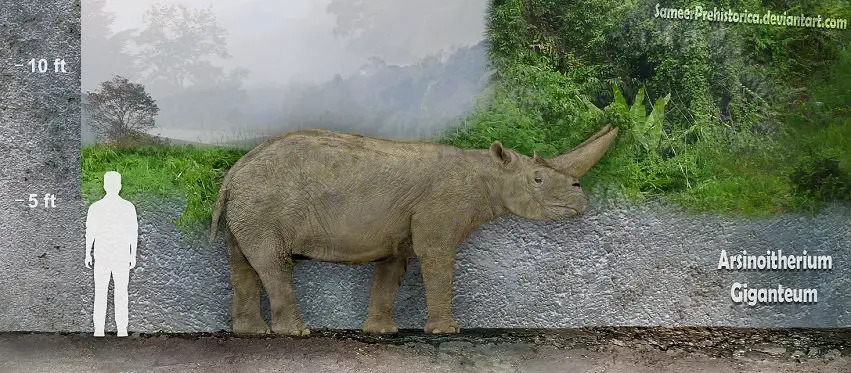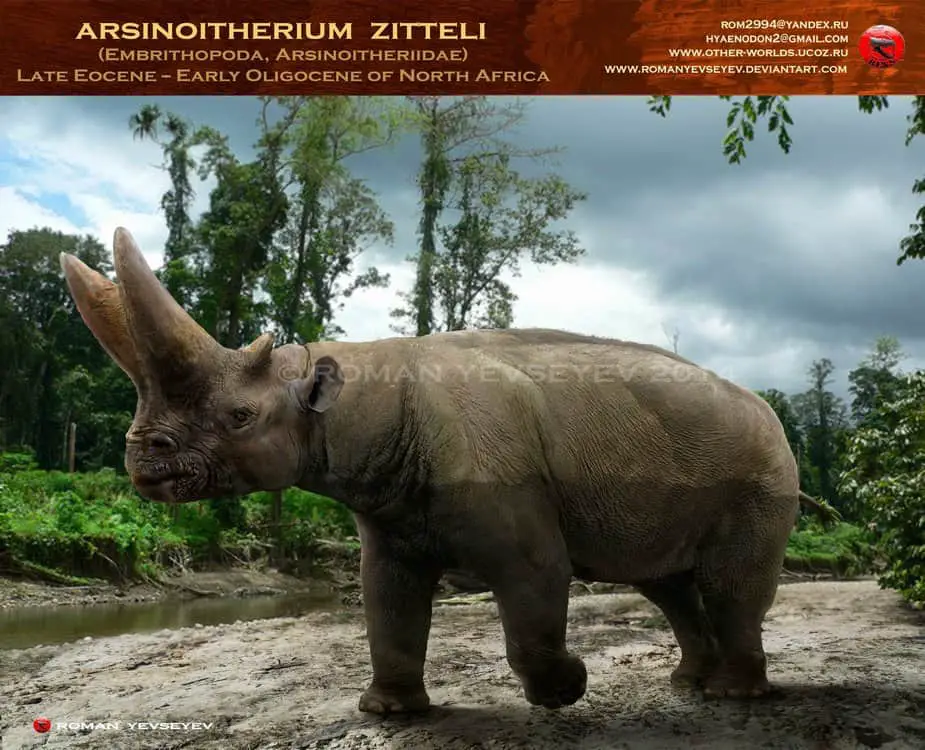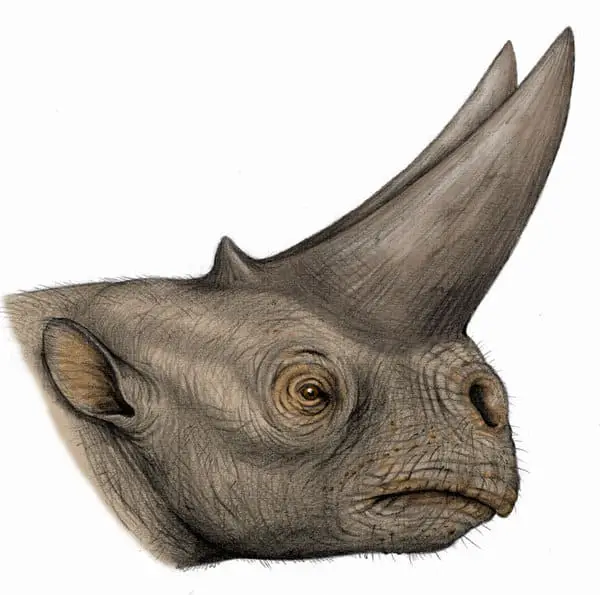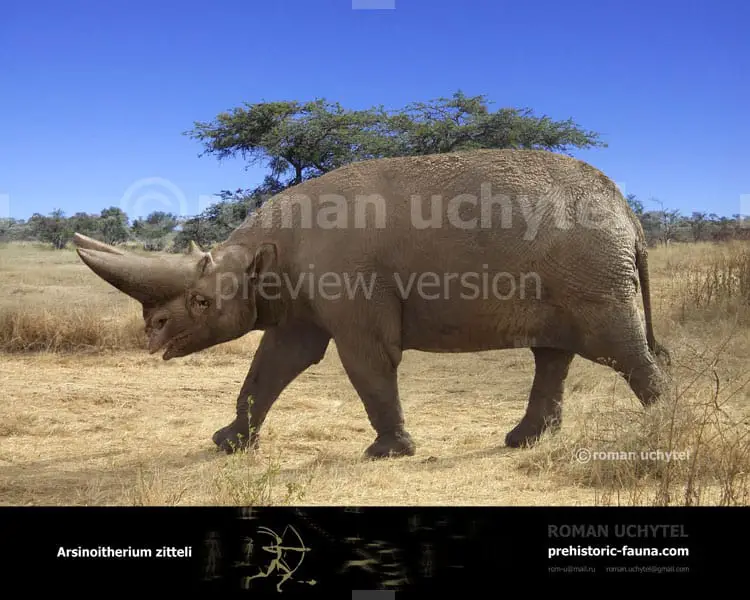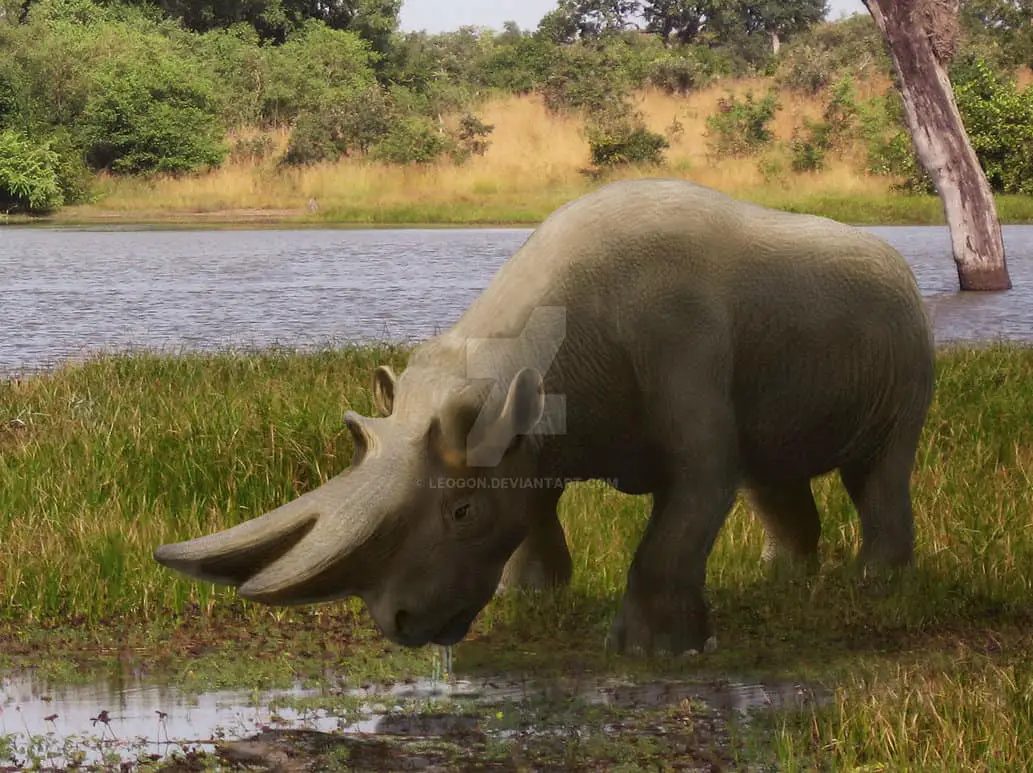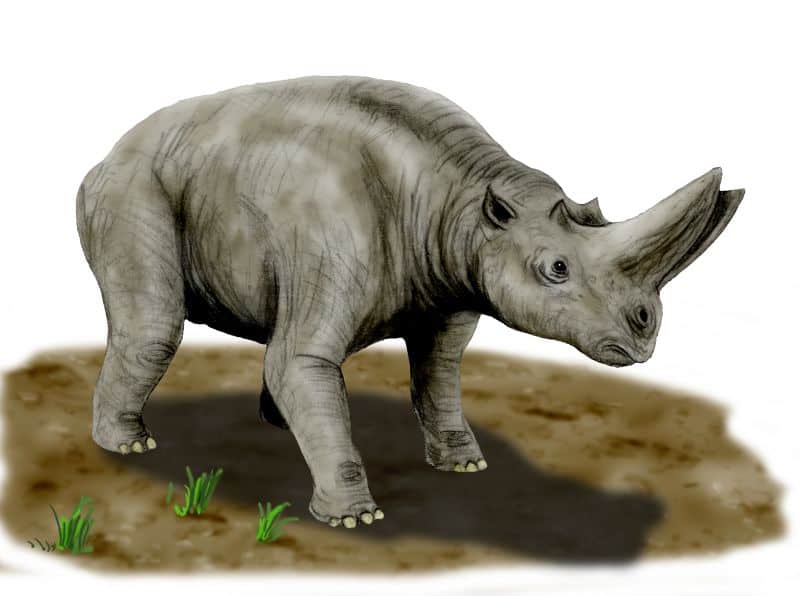In terrestrial zoology, the megafauna (from Greek μέγας megas "large" and New Latin fauna "animal life") comprises the large or giant animals of an area, habitat, or geological period, extinct and/or extant. The most common thresholds used are weight over 46 kilograms (100 lb)[1][2][3] (i.e., having a mass comparable to or larger than a human) or over a tonne, 1,000 kilograms (2,205 lb)[1][4][5] (i.e., having a mass comparable to or larger than an ox). The first of these include many species not popularly thought of as overly large, and being the only few large animals left in a given range/area, such as white-tailed deer, Thomson's gazelle, and red kangaroo. In practice, the most common usage encountered in academic and popular writing describes land mammals roughly larger than a human that are not (solely) domesticated. The term is especially associated with the Pleistocene megafauna – the land animals often larger than their extant counterparts that are considered archetypical of the last ice age, such as mammoths, the majority of which in northern Eurasia, the Americas and Australia became extinct within the last forty thousand years.[6] Among living animals, the term megafauna is most commonly used for the largest extant terrestrial mammals, which includes (but is not limited to) elephants, giraffes, zebras, hippopotamuses, rhinoceroses, and large bovines. Of these five categories of large herbivores, only bovines are presently found outside of Africa and southern Asia, but all the others were formerly more wide-ranging, with their ranges and populations continually shrinking and decreasing over time. Wild equines are another example of megafauna, but their current ranges are largely restricted to the old world, specifically Africa and Asia. Megafaunal species may be categorized according to their dietary type: megaherbivores (e.g., elephants), megacarnivores (e.g., lions), and, more rarely, megaomnivores (e.g., bears). The megafauna is also categorized by the order of animals that it belongs to, which are mammals, birds, reptiles, amphibians, fish, and invertebrates. -Wikipedia
This beast has long died off. No one knows why. But there are many interesting theories. Don’t you know.
Arsinoitherium
Quick Arsinoitherium Facts
- Lived from the Late Eocene through the Early Oligocene Periods
- Lived on the plains of North Africa
- Was as long as a black rhino
- Weighed more than a cow
- Was an herbivore
About Arsinoitherium
Arsinoitherium is an extinct paenungulate mammal which lived approximately 35 to 30 million years ago during the Late Eocene through the Early Oligocene Periods.
It’ bones were first discovered in the early twentieth century and was named in 1902 by paleontologist Mr. Beadnell.
The name of this dinosaur means “Arsenoe’s beast.” It was given this name because it was found in Egypt near the palace of Queen Arsinoe – a queen who in this area in 305 B.C.
If you look at Arsinoitherium pictures, then you might think that this mammal looked quite like a rhinoceros with two big horns jutting out of the top of its nose. However, that isn’t really true because these mammals weren’t a direct relative of the rhino.
No, they were more closely related to elephants, sea cows and dassies than they were rhinos.
These herbivorous mammals roamed the Egyptian plains.
They had primitive teeth which were pretty well suited for handling the tough vegetation in this area at this point in time.
One of the most fascinating facts about Arsinoitherium is that is probably lived off a diet of water plants, mangroves and a variety of other plants. It probably had to eat a whole lot of plants in order to meet its nutritional and caloric needs. It might have needed to eat in excess of 150 pounds of plant material a day in order to survive.
Arsinoitherium walked on all four legs – much like a rhino – and it was approximately 10 feet long and weight around 1 Ton or 2,000 pounds. These animals were about 5’9” tall at the shoulders – which means they were as tall as the average human man.
That’s pretty big.
The horns on its nose probably had very little to do with defending itself from predators. Instead, they were probably cosmetic and used to attract females during mating season. Paleontologists believe that is had very little use beyond mating.
You do know that women are always attracted to pairs of large predominant horns. Ah, don’t you know.
Some paleontologists have speculated that this mammal had to be in or near water all of the time in order to prevent from drying out. Much like a modern-day hippo.
Other paleontologists don’t believe that was the case at all, however. Until further evidence is produced, well, I suppose we’ll never know.

